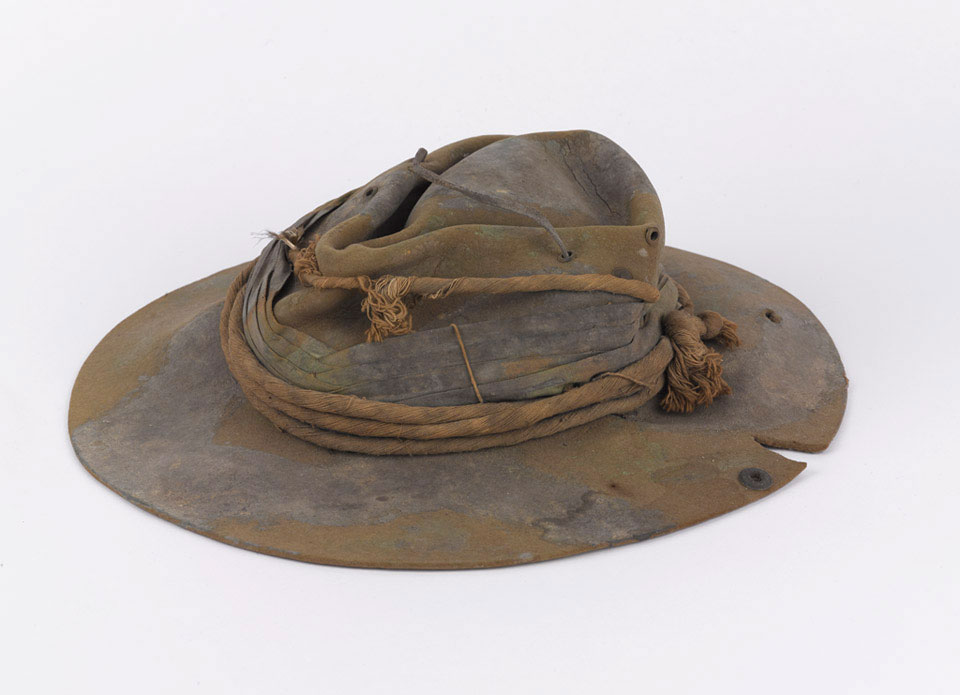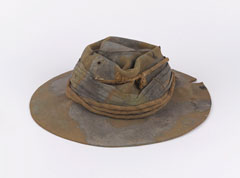
Online Collection
« Prev - 1 of 1 results - Next »
Slouch hat, Major Robert Pringle, Royal Signals, Second Chindit Expedition, 1944
In February 1943 and March 1944 British and Indian soldiers of the Long Range Penetration Force, nicknamed 'the Chindits', undertook two missions behind enemy lines in Burma. Supplied by air, they sabotaged Japanese railways and roads, and encouraged local resistance groups. They also prevented the Japanese deploying all their resources to the main battle zones in Burma.
The Chindits suffered heavy casualties and many succumbed to illness. Their military value was therefore questioned by some. But they undoubtedly boosted Allied morale in Burma after the defeats of 1941-42. They also provided important long-term lessons on air supply and proved that British soldiers could live and fight in the jungle.
British Empire troops had first adopted the slouch hat, so called because one side of it droops down, in the Boer War (1899-1902), but it was also worn by the 14th Army in Burma, including the Chindits.
Pringle's hat has a hole in the brim caused by mortar fragments that hit his trench during the fighting at Mawlu in April 1944. The blast killed his sergeant who was next to him.
NAM Accession Number
NAM. 1997-11-112-1
Copyright/Ownership
National Army Museum, London
Location
National Army Museum, Formation gallery
Object URL
https://collection.nam.ac.uk/detail.php?acc=1997-11-112-1




